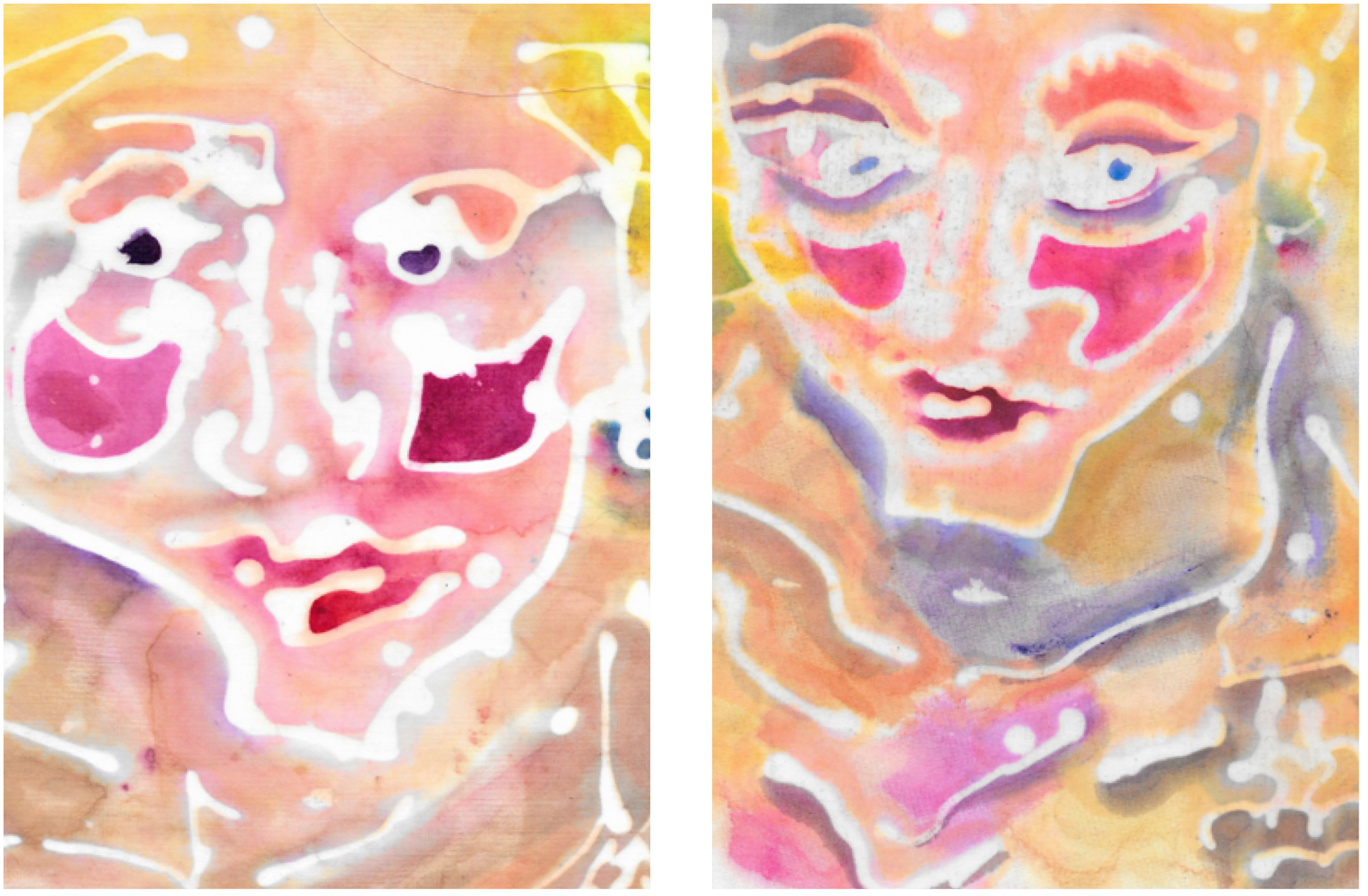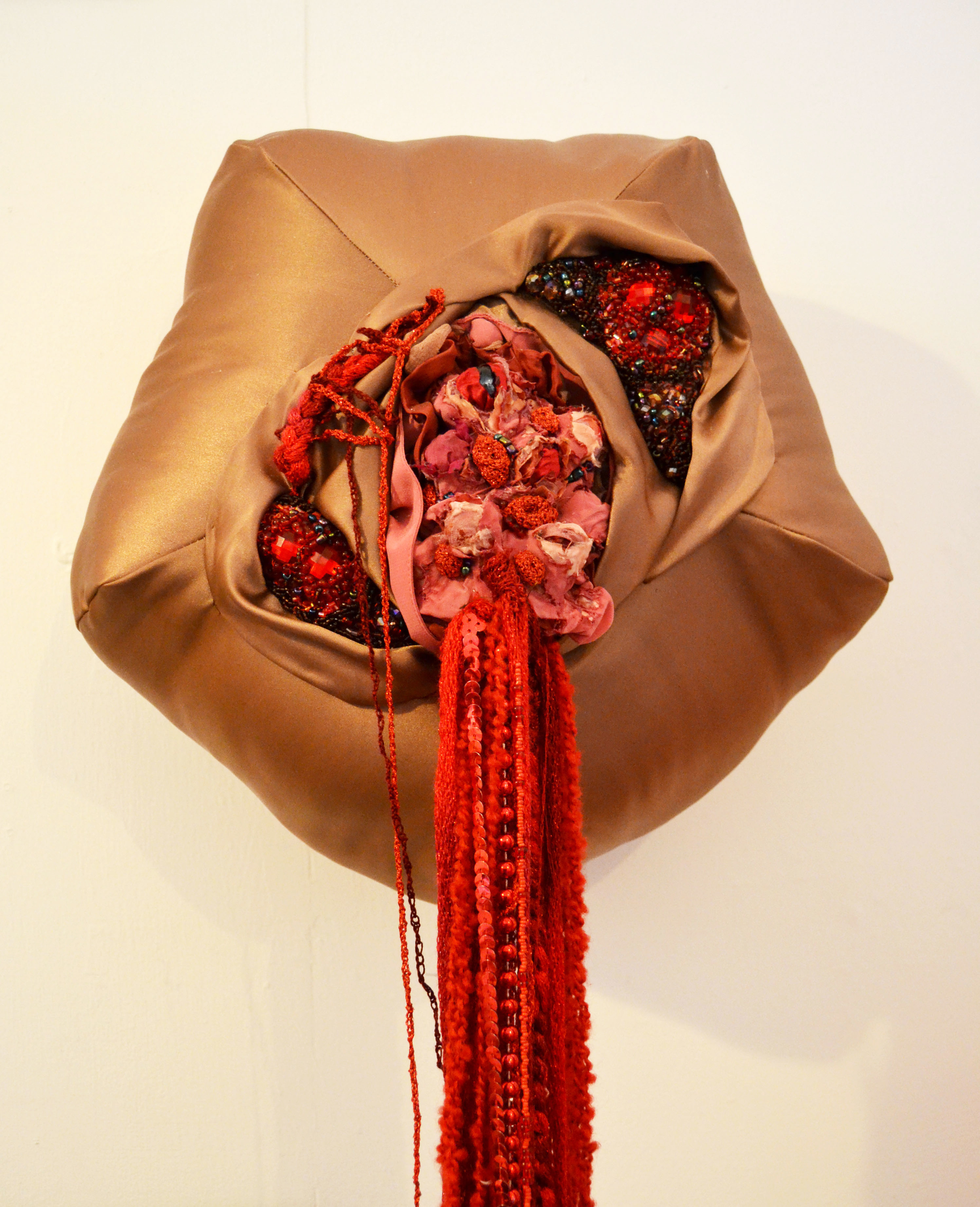
What is Batik? Definition Of Batik
Batik is a method of decorating fabric, by applying hot wax to fabric or paper with a tool, traditionally a Tjanting is used. The heated wax can be applied to create patterns. Once the wax is dry, the background is painted and left to dry. The wax is then taken out of the fabric using a household iron. Once wax free, the fabric or paper can be used to create works of art or left in this state as finished.
Batik History
It originated in Indonesia. It was then taken on as a technique to use for interior design by artists in the late 1800s. It is now used by many textile, interior and mixed media artists to produce a decorative style within their artistic practice. The word itself means to write, dot, or pattern.
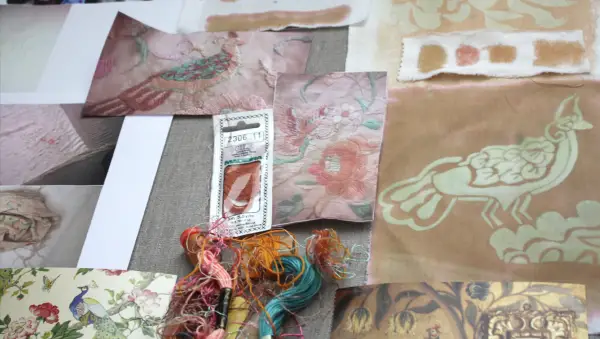
What Can Finished Batik Pieces Be Used For?
Once the Batik piece is created, it can be used as a part of a textile arts project and be further embellished using embroidery techniques. The Batik may also be left in this state finished, framed as an art piece. The Batik decorated fabric could also be used to make accessories or clothing, such was a bag or skirt. It could also be used as the fabric for a patchwork or quilting project.
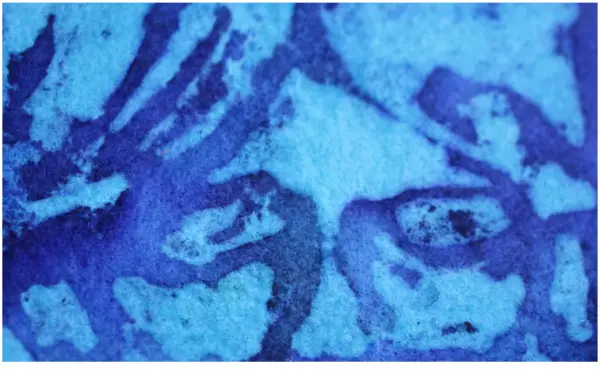
Can I Batik At Home?
Yes! This technique is easy to do, using materials found around your home, such as an old pan, paintbrush and household candles. Methods of decorating fabrics and paper like this one have become popular in the last two years due to more of us being more locally based and are achievable without much material cost. Natural fabrics such as cotton and silk, along with a variety of papers can be used.
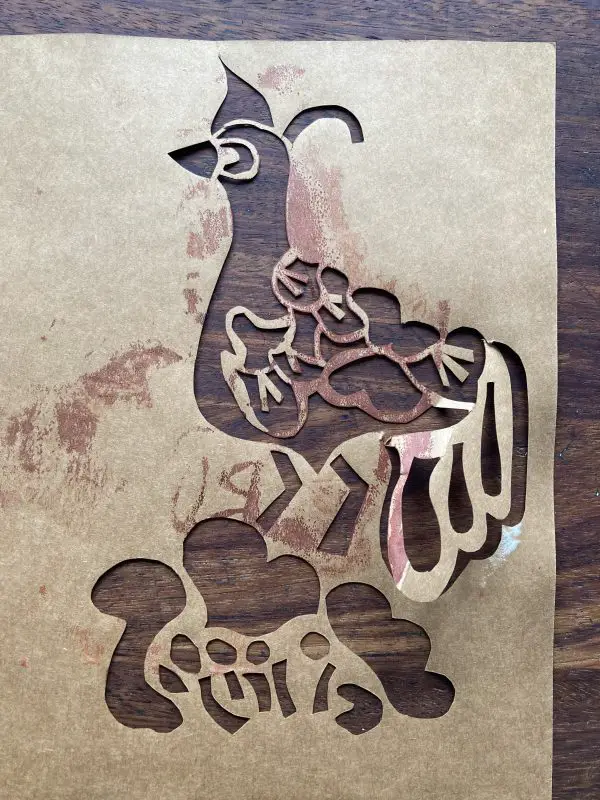
What Tools Do I Need?
- Kitchen hob and worktop
- A plastic sheet, tray or cardboard to protect your working area from wax splashes
- A selection of papers and natural fabrics, in white or pale-colours
- Watercolour paints
- Koh-I-Noor watercolours are good as they are highly-pigmented and produce bright results, although they are not colourfast and are not suitable for any fabrics you want to wash.
- Fabric paints or dyes
- Look for batik dyes or liquid fabric paints, such as Jacquard Dye-Na-Flow. Use permanent colours if you want to wash the finished fabrics.
- An old metal pan, to melt the wax in
- Alternatively, use a melting pot (the metal type, used for making candles, chocolates or soaps) or an old candle jar, placed in a pan of water (bain-marie/double boiler method).
- A household candle
- Marking tools
- Use old paintbrushes, wooden spatulas and spoons that you are happy to cover in wax. Or you can use a traditional tjanting tool, sourced online.
- Old newspapers, to blot away the wax out of your drawings An old iron
- Use an iron that you don’t mind getting wax on.
- Stencils (optional)
- Pre-made stencils, or cut your own design using a craft knife and thick card.
- Basic hand sewing kit (optional, for further development exercise) Beads and buttons (optional, for further development exercise)
Batik Basics
Step one
Set up a work area near to your kitchen hob/heat appliance. Cover your work area with protective material. Gather your papers and fabrics, marking tools, wax and melting pot/pan. Place any photographs or other inspirational resources nearby, for reference.
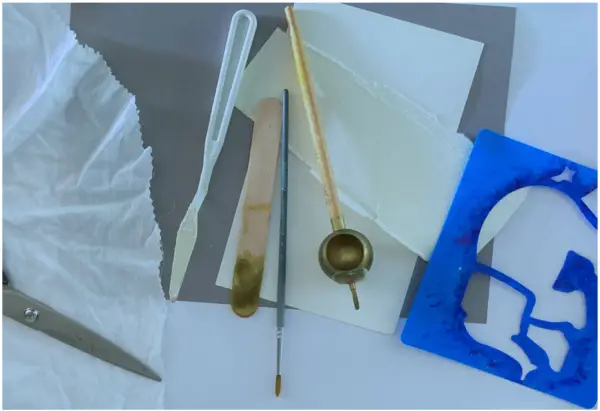
Step two
Gently heat the wax in your pan. Use a very low setting. You do not want the wax to smoke.
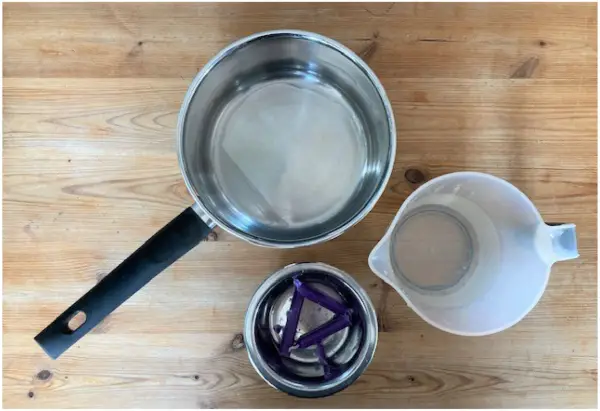
Step three
Choose a brush, spatula or spoon. Dip it into the wax. Use it to draw shapes and patterns onto the paper or fabric. As you work, you will begin to understand how fast the wax dries and how quickly you’ll need to make your marks. Create several samples. If you have a particular subject in mind, try drawing it with wax. You might want to use a stencil or a traditional tjanting tool (optional). If you use a stencil, leave it in place until the wax is dry.
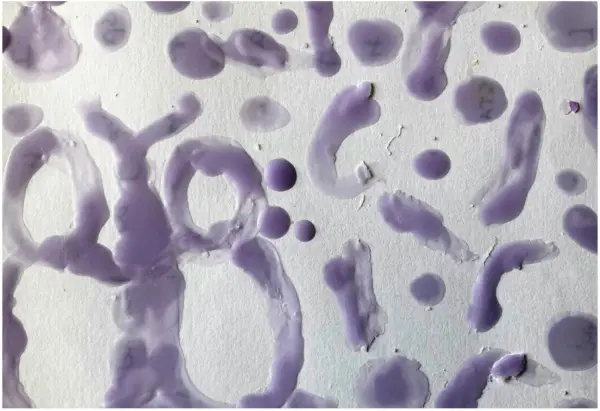
Step four
When the wax is completely dry, paint the paper/fabric. Use a clean paint brush and a selection of paints and dyes. Add colour and make marks in a playful way.
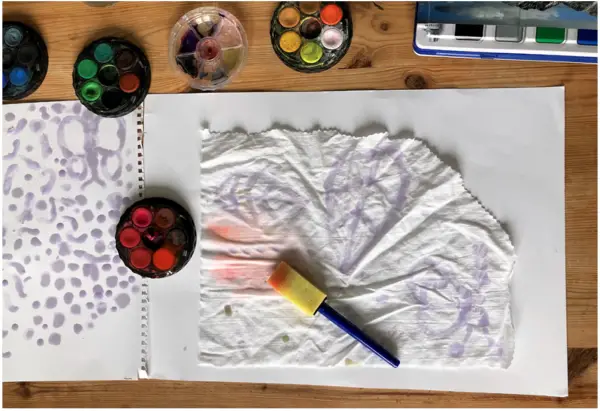
Step five
When the samples are completely dry, iron the wax out of the samples. Set the iron to a non-steam setting. Place one of your wax drawings between some sheets of newspaper, and iron. Dark patches of wax will come through the newspaper.
Move the sample to a fresh area of the newspaper and iron again. Repeat this until all the wax comes out of the sample. Iron the wax out of the rest of your samples in the same way.
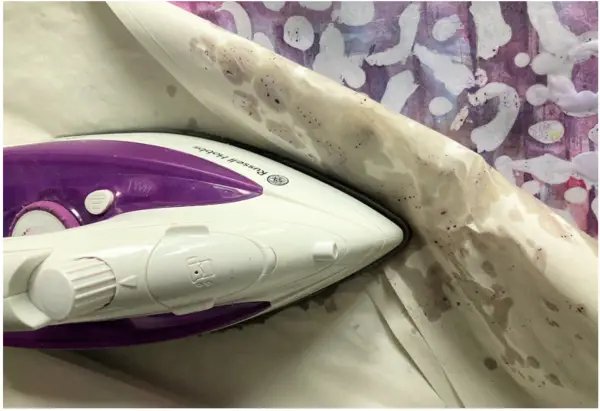
Step six
You should now have a pile of finished paper and fabric samples. These can be used for further development, stitch and collage.
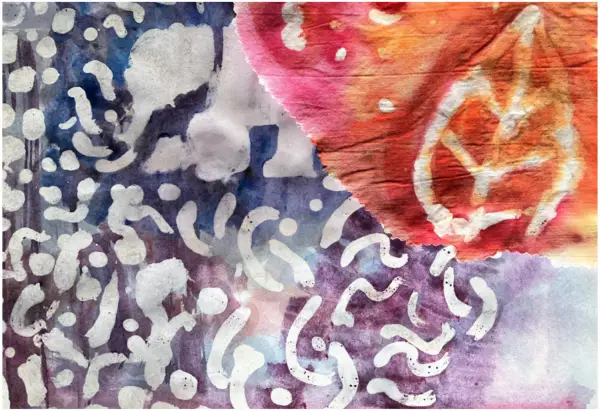
Top Batik Tips
- When heating the wax, make sure it has been fully melted as it needs to be heated properly to become attached to the fabric or paper which it is then applied on. If the wax is not hot enough, it will sit on the surface of the material and not penetrate. It needs to really penetrate the material you are applying it to, otherwise once you begin dyeing or painting the fabric the pattern the wax has created will be lost, as the dye / paint will escape underneath the wax and colour all of the fabric, not only the non-resist areas.
- When finished, it the piece is to be used within a sewing project, make sure the needle chosen for your machine or hand embroidery project is fine and sharp, as the wax will leave a starched thick feel to the material, even once it has been taken out of the fabric with your iron.
- Make sure you use fabric or paper which has not been previously dyed or painted, as this will spoil the technique.
- Don’t use synthetic fabrics, they will not dye or paint well.
Batik Project Ideas
- Quilting
Due to its textural appearance Batik can be a lovely addition to any quilt. Often Batik fabrics are bright, making them a cheery option for the quilter.
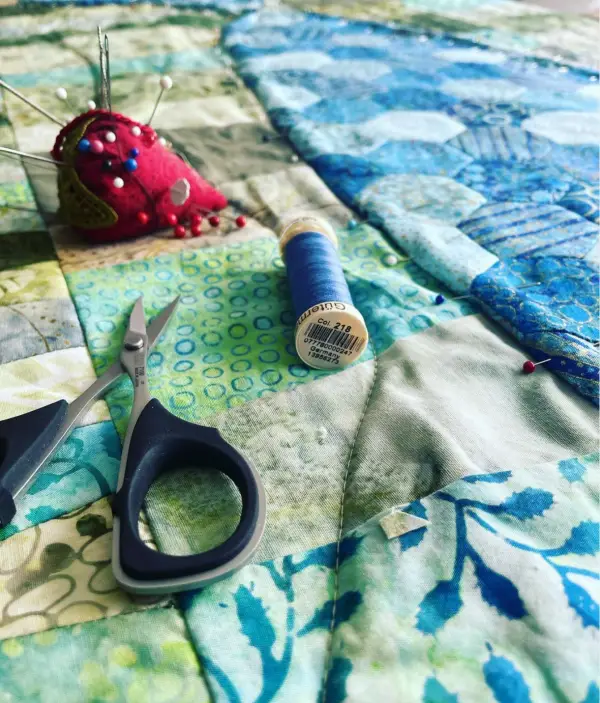
- Patchwork
With its patten and vibrant colour, Batik fabrics can be incorporated into any patchwork.
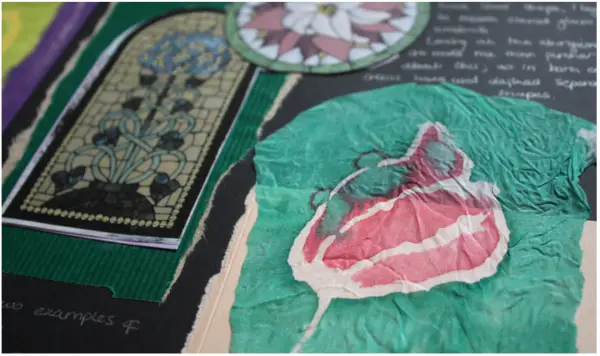
- Bags and other accessories
Once finished, the stiff starched nature of Batik fabric works well to create simple bags, cushions and purses.
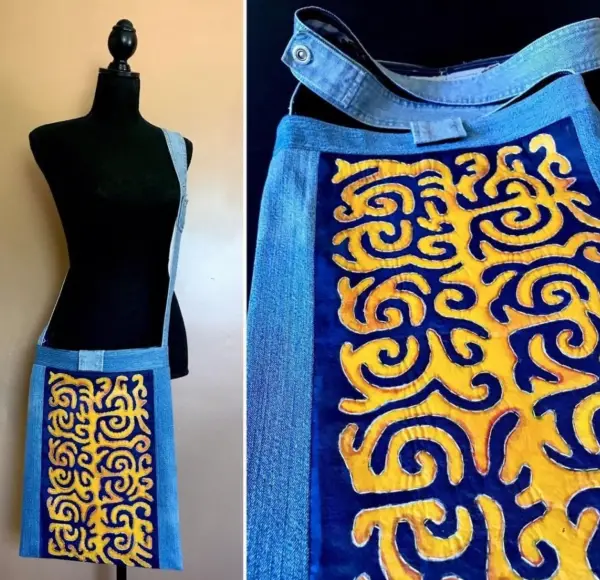
- Clothing
The bright Batik patterns make bold dresses and skirts.
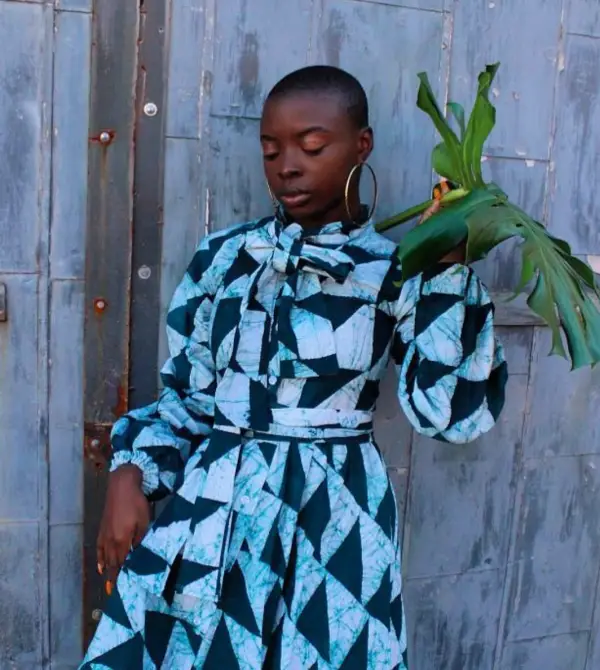
- Embroidery
The fabric itself can make a lovely background to sew on, either by hand or machine. It could also be embellished with beads and sequins.
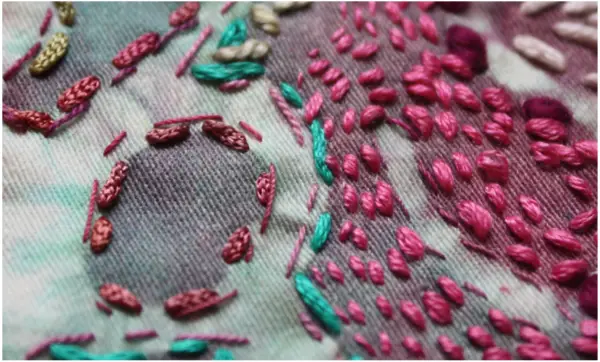
- Framed
Many artists enjoy making landscape scenes or more thought out pictorial Batik pieces, once they become proficient using this method. The art piece created can then be framed as a piece of wall art.
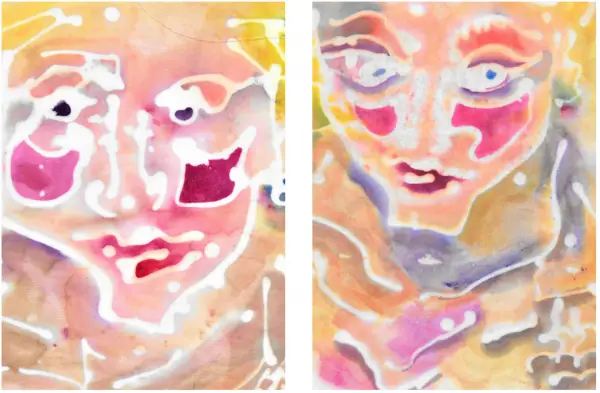
Where Can I Read More About It?
On our website, we recently featured a Batik quilt within our column Quilty Pleasures. If natural dyeing is your thing, this book review of Natural Dyeing With Plants by Franziska Ebner and Romana Hasenoehrl will leave you knowing how to dye your Batik fabrics once you have created the patterns with wax!

